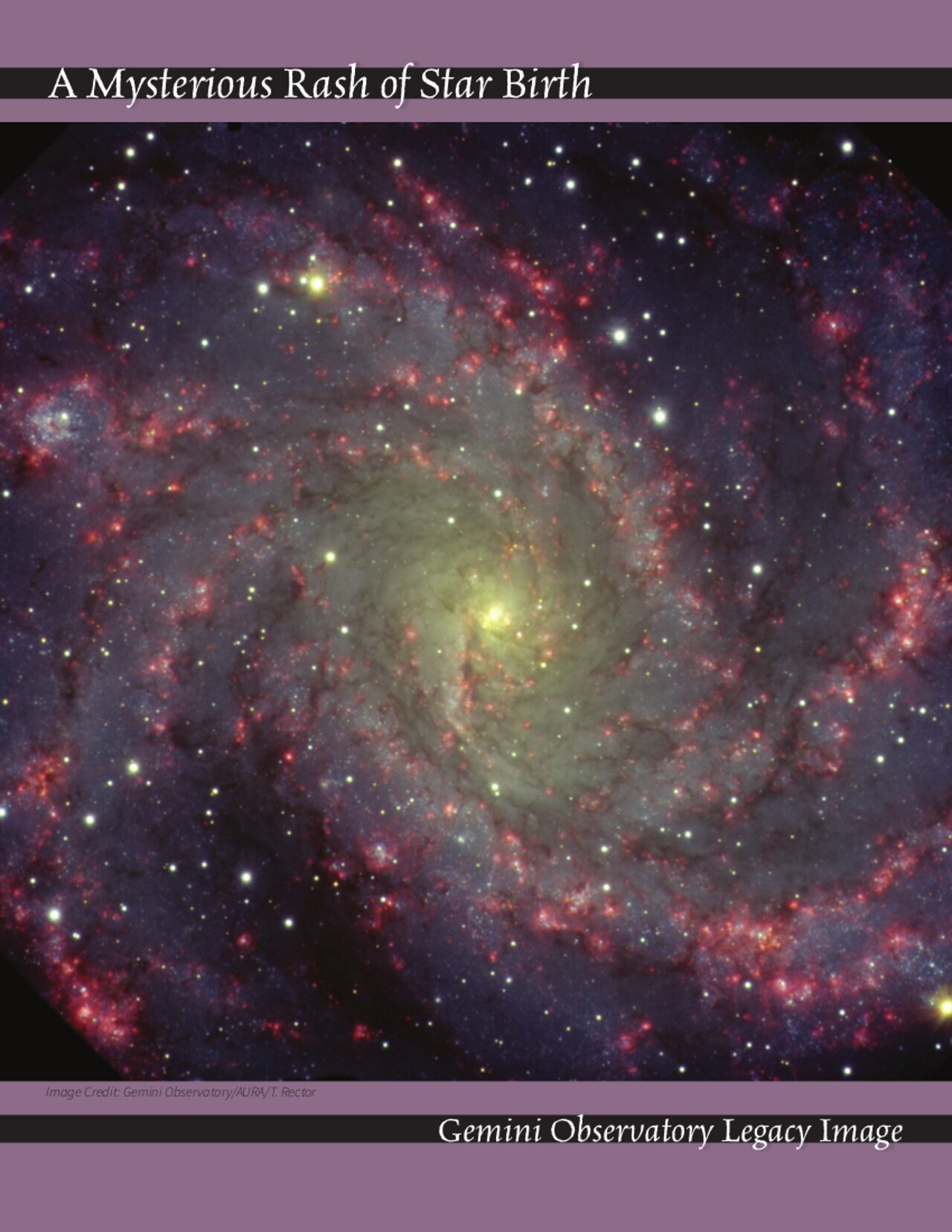Handouts: A Mysterious Rash of Star Birth
In this crisp Gemini North image, pink bubbles of glowing hydrogen gas spread across the arms of the face-on spiral galaxy NGC 6946 like a rash. This amazing infusion of color is fueled by the ubiquitous birth of massive stars throughout NGC 6946; these hot young stars blast copious amounts of ultraviolet radiation into their natal shrouds of hydrogen gas, causing the clouds to glow red. For reasons unknown, NGC 6946 has a much higher rate of star formation than all of the other large galaxies in our local neighborhood.
The prodigious output of stellar nurseries in this extragalactic neighbor — which lies about 20 million light years away in the direction of the constellation of Cepheus — eventually leads to accelerated numbers of supernovae explosions. NGC 6946’s supernovae have occurred in rapid-fire fashion for tens of millions of years. Over the past century, eight supernovae are known to have exploded in the arms of this stellar metropolis. NGC 6946 is, in fact, the most prolific known galaxy for supernovae during the past 100 years. These events have led to its popular nickname, the “Fireworks Galaxy.” If we could compress just a million years of NGC 6946’s history into a time-lapse movie, lasting but a few seconds, we would bear witness to a stream of nearly constant outbursts of light as new stars flare into view, while old ones expire in spectacular explosions.
Créditos:NOIRLab
About the Handout
| Id: | handout050 |
| Release date: | 13 de Julio de 2021 a las 11:28 |
| Idioma: | English |
